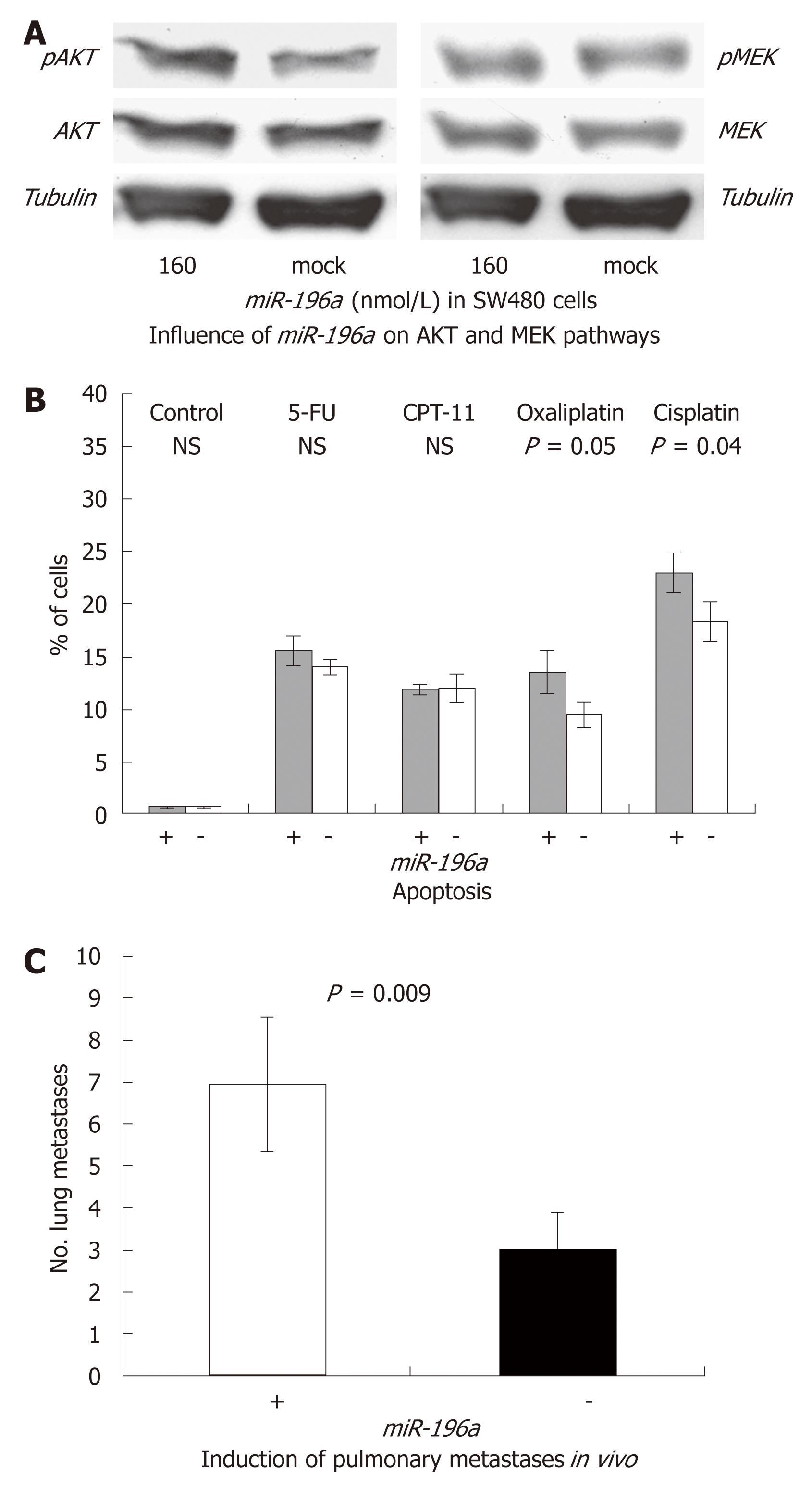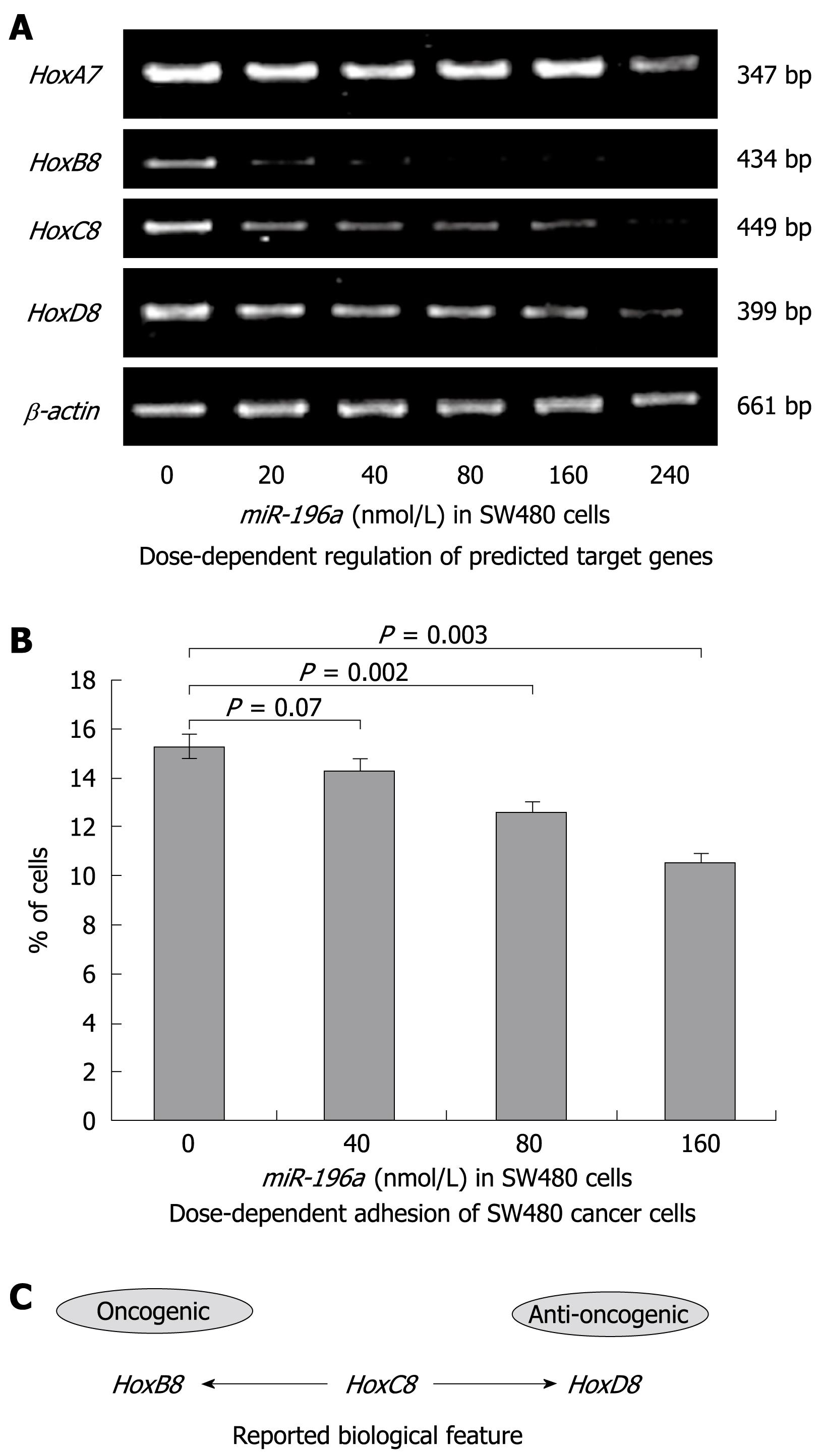Copyright
©2009 The WJG Press and Baishideng.
World J Gastroenterol. May 7, 2009; 15(17): 2089-2096
Published online May 7, 2009. doi: 10.3748/wjg.15.2089
Published online May 7, 2009. doi: 10.3748/wjg.15.2089
Figure 1 Transcription levels of miR-196a in cancer cell lines and human CRC.
A: Cancer cell lines SW620, HT29 and Snu16 reveal increased miR-196a levels as compared to the primary colon cancer cell line SW480; B: miR-196a transcription is up-regulated in two of seven cancer samples in comparison to the matching mucosa sample. In contrast, no down-regulation in the respective tumor samples was observed.
Figure 2 In vitro effect of miR-196a in human CRC.
Transient miR-196a transfection significantly decreases adhesion, increases migration and invasion but does not impact on proliferation or apoptosis of SW480 colon cancer cells.
Figure 3 Impact of miR-196a on cellular signaling, in vitro chemosensitivity and in vivo induction of lung metastases.
A: miR-196a transfection activates the AKT pathway but does not impact on the MEK pathway; B: miR-196a transfection significantly increases chemosensitivity towards oxaliplatin and cisplatin but not towards 5-FU or irinotecan; C: miR-196a significantly promoted growth of lung metastases in a xenograft biosystem after tail-vein injection and 7 wk of incubation.
Figure 4 Dose-dependence of miR-196a promoted effects.
A: miR-196a decreases HoxA7, HoxB8, HoxC8 and HoxD8 mRNA levels with a dose-dependent and gene-specific character; B: miR-196a inhibits cancer cell adhesion to plastic covers in a dose-dependent manner; C: Biological features of HoxB8, HoxC8 and HoxD8 as reported in literature. HoxB8 exerts an oncogenic effect, while HoxD8 might have tumor-suppressive relevance. For HoxC8 both, pro-oncogenic and anti-oncogenic features, have been reported.
-
Citation: Schimanski CC, Frerichs K, Rahman F, Berger M, Lang H, Galle PR, Moehler M, Gockel I. High
miR-196a levels promote the oncogenic phenotype of colorectal cancer cells. World J Gastroenterol 2009; 15(17): 2089-2096 - URL: https://www.wjgnet.com/1007-9327/full/v15/i17/2089.htm
- DOI: https://dx.doi.org/10.3748/wjg.15.2089












